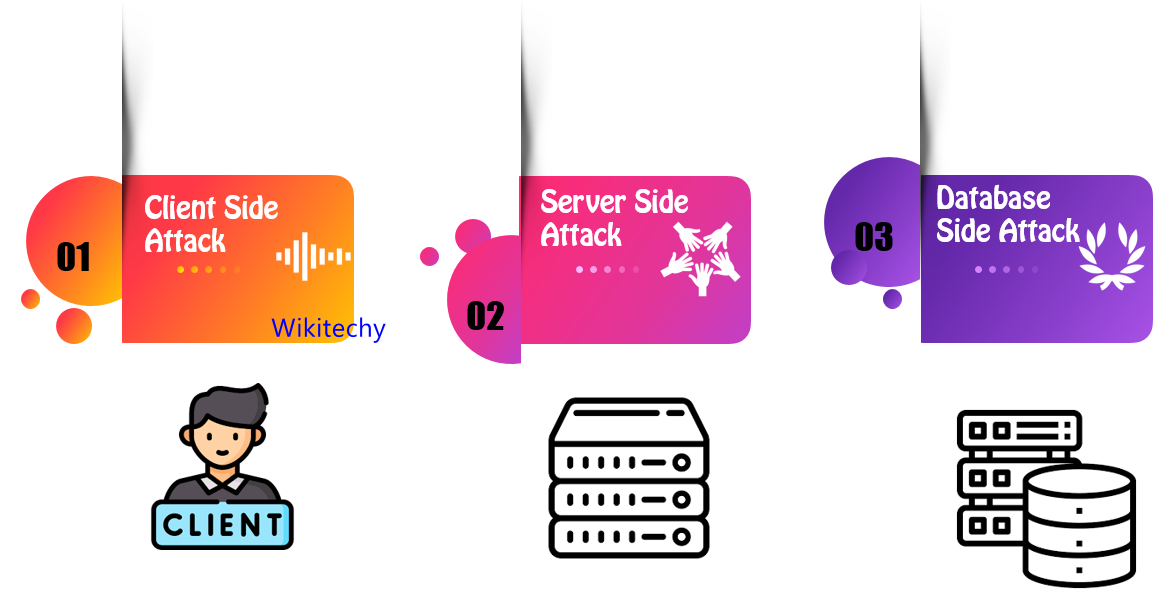Types of Cyber Attacks
Types of Cyber Attacks
In today's digital age, data security is crucial due to the prevalence and sophistication of various cyber attacks. These include phishing, malware, ransomware, denial-of-service attacks, and social engineering, which can compromise sensitive data. To safeguard against these threats, it is essential to implement strong data security measures such as encryption, regular backups, and employee training. You can go to this page for tips on how to secure your data.
- Cyber-attack is an exploitation of computer systems and networks.
- Used for malicious code to alter computer code, logic or data and lead to cybercrimes, such as information and identity theft.
Cyber-attacks can be classified into the following categories:

Types Of Cyber Attacks
Web-based attacks
These are the attacks which occur on a website or web applications. Some of the important web-based attacks are-
Injection attacks
- Some data will be injected into a web application to manipulate the application and fetch the required information. Eg- SQL Injection, code Injection, log Injection, XML Injection etc.
DNS Spoofing
- DNS spoofing is a type of computer security hacking. The DNS Spoofing attacks can go on for a long period of time without being detected and can cause serious security issues.
Session Hijacking
- It is a security attack on a user session over a protected network. By stealing the cookies, an attacker can have access to all of the user data.
- This type of attack which attempts to steal sensitive information like user login credentials and credit card number.
Brute force
- It is a type of attack which uses a trial and error method.
- This attack used by criminals to crack encrypted data, or by security, analysts to test an organization's network security.
Denial of Service
- An attack which meant to make a server or network resource unavailable to the users. It uses the single system and single internet connection to attack a server. It can be classified into the following-
- Volume-based attacks - Saturate the bandwidth of the attacked site, and are measured in bit per second.
- Protocol attacks - It consumes actual server resources, and is measured in a packet.
- Application layer attacks - To crash the web server and is measured in request per second.
Dictionary attacks
- This type of attack stored the list of a commonly used password and validated them to get original password.
Read Also
URL Interpretation
- It is a type of attack where we can change the certain parts of a URL.
File Inclusion attacks
- It is a type of attack that allows an attacker to access unauthorized or essential files which is available on the web server or to execute malicious files on the web server by making use of the include functionality.
Man in the middle attacks
- It is a type of attack that allows an attacker to intercepts the connection between client and server and acts as a bridge between them.
System-based attack
These are the attacks which are intended to compromise a computer or a computer network. Some of the important system-based attacks are as follows-
Virus
- It is a type of malicious software program that spread throughout the computer files without the knowledge of a user. It can also execute instructions that cause harm to the system.
Worm
- It is a type of malware whose primary function is to replicate itself to spread to uninfected computers.
Trojan horse
- It is a malicious program that occur unexpected changes to computer setting and unusual activity, even when the computer should be idle. It misleads the user of its true intent.
Backdoors
- It is a method that bypasses the normal authentication process. The developer may create a backdoor so that an application or operating system can be accessed for troubleshooting or other purposes
Bots
- A bot is an automated process that interacts with other network services. Common Examples of bots program are the crawler, chat room bots, and malicious bots.
